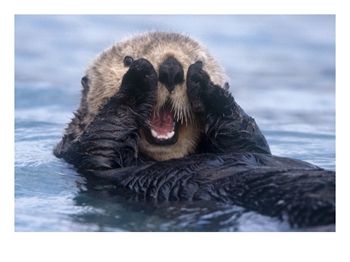Otters are part of the Chordate Phylum. This class of marine organisms are vertebrate organisms, containing a notochord. A notochord is a rod that helps provide support while the organism is moving. The Chordate Phylum also have characteristics such as a bilateral symmetry, segmented muscles, some sort of tail, digestive system, an endoskeleton and a ventral heart

Otters (Lutra Canadensis) are found along the shores of bays and rivers. They need a habitat no deeper than 40m, with shelter from storms and human disturbances. These areas must also have the otters food sources such as fish, frogs, crayfish, crabs and shellfish. Their unique high metabolic rates require them to hunt 3-5 hours a day, catching at 15% of its weight or 100 grams of fish per hour to survive. With otters speed due its long slim bodies, webbed paws, muscular tails and sharp claws, specialized for eating shellfish, catching this much food is not that much a challenge. Otters fur is also very special. It has an under fur layer, which is covered by guard air. This under layer traps air, which is used as a sort of insulation, keeping it warm.
These mammals reproduce by sexual reproduction when they reach 2 years old, with 1-2 babies born per litter.